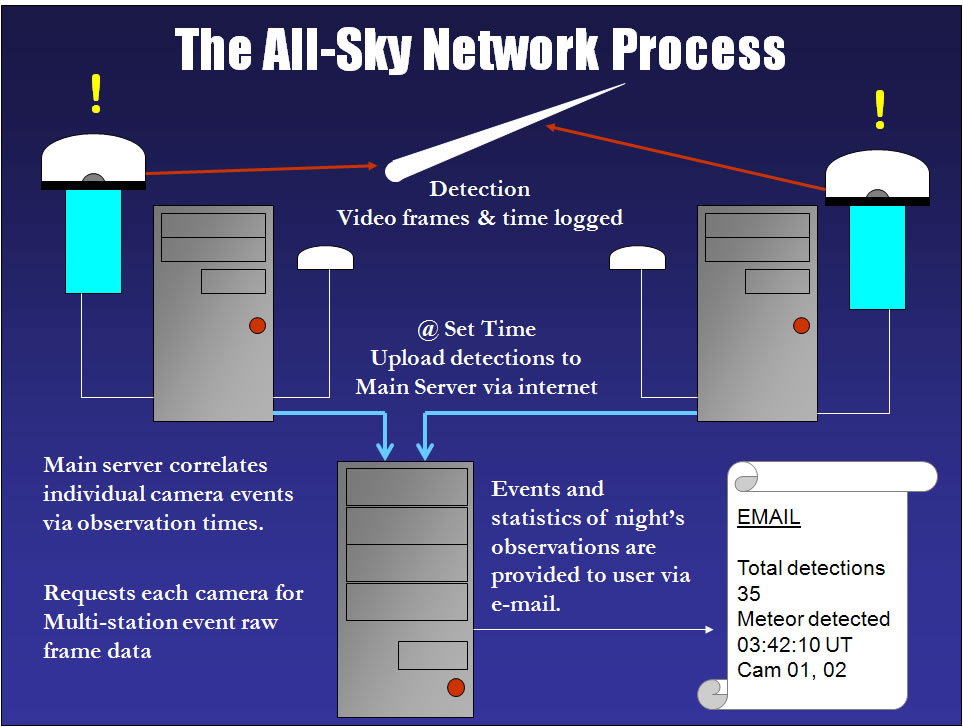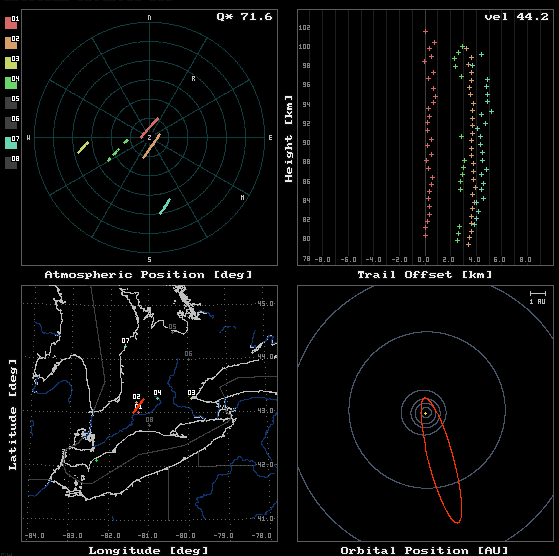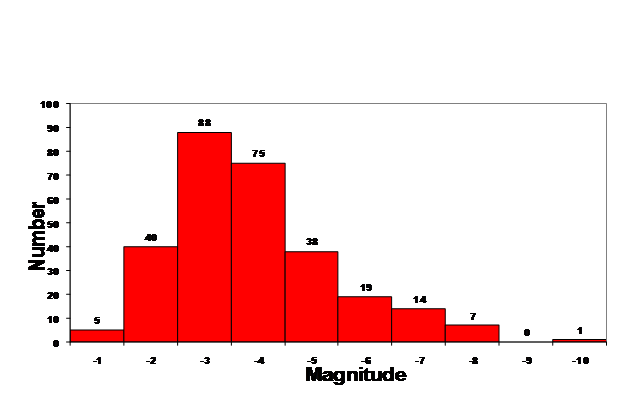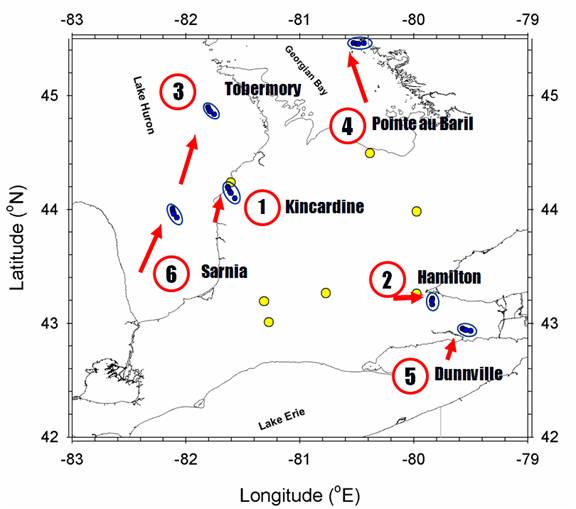ASGARD All-Sky Camera Network
The Meteor Detection Process
A schematic of the multi-camera detection and processing flow is show below

Each automatically detected event has a preliminary solution generated for quick-review. The final trajectory and photometry for positively identified meteor events is performed manually to ensure quality. An example of the quick-look automatically generated review is shown below:

Here the apparent paths on the all sky image from each camera is graphically displayed (upper left plot) and a plot of the expected length as a function of time - observed length (Trail offset) is given in the upper right corner - this allows for quick checks as to whether deceleration is evident of not. The lower two plots show the apparent path of the meteor on a local map of Southern Ontario and the final plot shows the apparent orbit of the body.
The apparent magnitude distribution of all manually reduced multi-station events is shown below:

In total we have recorded just over 2000 multi-station events since the network became operational in 2006.
While the main purpose of the network is to provide co-ordinated observations with other sensors (radar, infrasound, seismic etc.) the network has recorded a number of possible meteorite dropping fireballs. One recovered event occurred on Sept 25, 2009 and dropped meteorites near Grimsby, ON. Other possible meteorite producing events are shown below:

Additional Details about the system can be found here.



